
It is finally complete! After 9000 years, I have finally finished my latest Inquistor warband. Leader of the gang Archmagos Lingus Quinne finally stands alongside his best buds previously featured on this site, including Genetor Vacillus, Arco-flagellant X206 and a Zeta-Phi pattern speciment recovery servitor.
Quinne is a radical Magos Biologis with a terrifying amount of power, both physical and political. He has a long and productive history with his Biologis peers, and his resume is littered with redacted periods from his time in the Inquisition. He knows exactly how to keep things above board and off books, making sure his science toes the line between “far enough” and “too far”.
That is, until he discovered a Yu’Vath artifact.
Assembling the magos
Building radical Adeptus Mechanicus minis is always fun, and Lingus Quinne was no exception. The biggest difficulty I actually had was narrowing my options down – I just had too many wacky concepts and weird weapon options to choose from.
Lingus Quinne started life as a different model entirely, and over years of gaming slowly graduated from Inquisitorial retinue member to dangerous radical antagonist. He needed a glow-up.
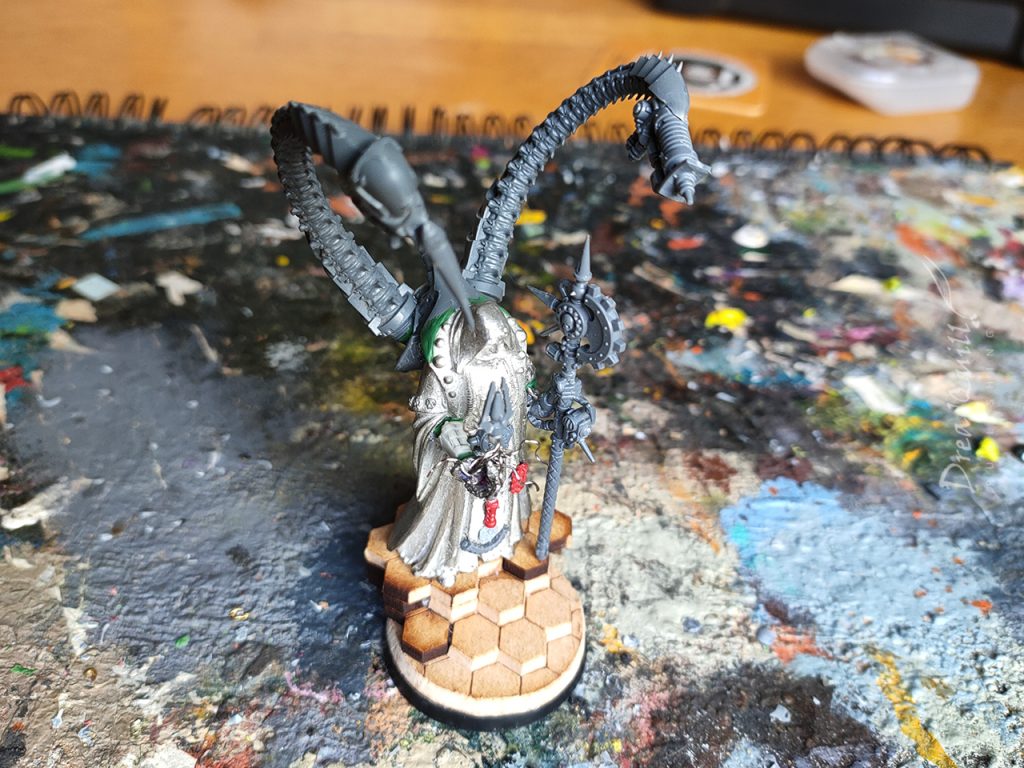
I had always been enamoured with the classic metal Navigator, and many years ago I bluetacked Hieronomus Tezla’s chain axe to the empty arm socked and thought “Oh yeah, you’ll be an AdMech one day”. He was put back in the box and immediately forgotten about until this project came about.
He wasn’t designed as a player character originally – him and the gang were supposed to be the NPC villains behind the Gorgon Crystals campaign that was sadly abandoned during the first lockdown. As a result I had very little intention of making him fair or balanced to fight against – he was a final boss of sorts, able to take on entire warbands by himself!
Freed from the shackles of even-handedness, my mind wandered to radical places. What if he was also psychic?
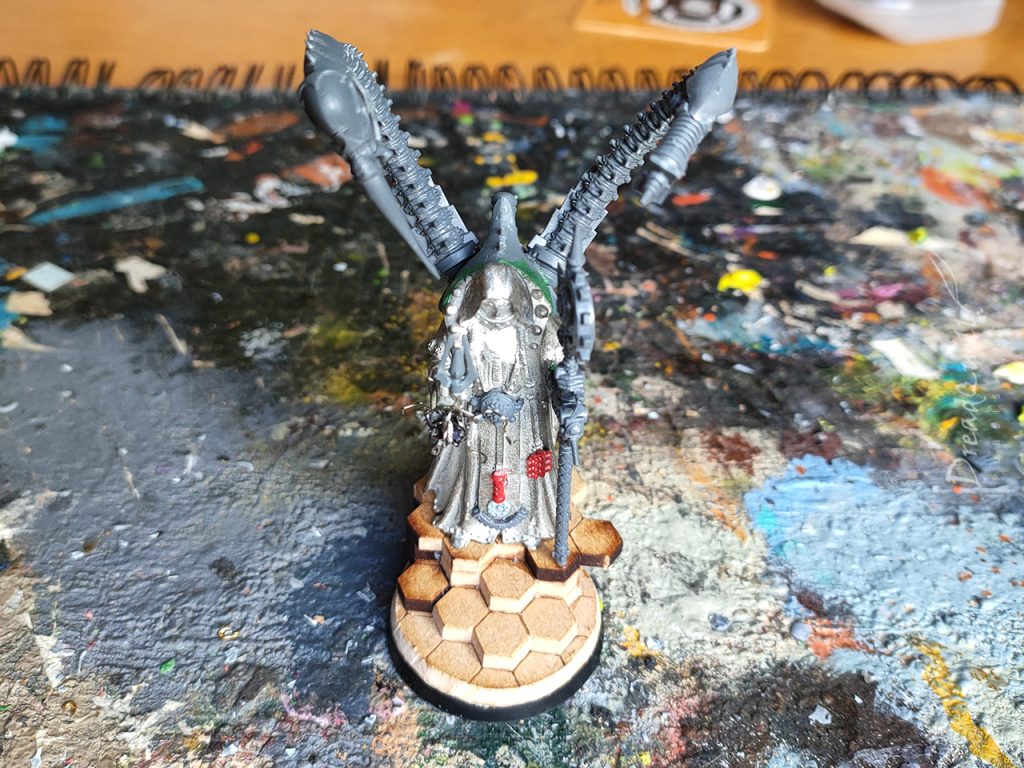
The narrative of the campaign centred around a bunch of weird xenos artifacts infused with warp energy, and at the centre of the web was a radical Magos Biologis who had found the keystone that gave him incredible power (with definitely no downsides, obviously). I originally tried to model him telekinetically manipulating the floor hexes around him, creating a barrier or shield, but I wasn’t happy with how it looked.
Using Scarn’s spooky mechanical hand, I flipped it over from ‘jedi mind trick’ to ‘holding a macguffin’, which suited the stoic pose of the Navigator mini far more. With the end snipped off a Dark Eldar heavy weapon to pose as the weird crystal and some thin wire as sparking energy, I knew I was onto a winner. I was just dreading painting it…

The power axe came from the 40k Techpriets Dominus figure, surprisingly well scaled for one of the taller 54mm figures. The awkward angle of the elbow join added an extra uncomfortable element, like there was an extra elbow hidden up his sleeve, or hinting at a non-human form beneath the robes.
The base was made from a now-discontinued TTCombat set – a bunch of laser cut hexagons that I stacked up to create a facsimile of stairs. I imagined his reveal being very Dracula-esque – walking purposefully down an elaborate set of steps, cloak billowing behind him, monologuing about foolish mortals daring to tresspass on his domain.
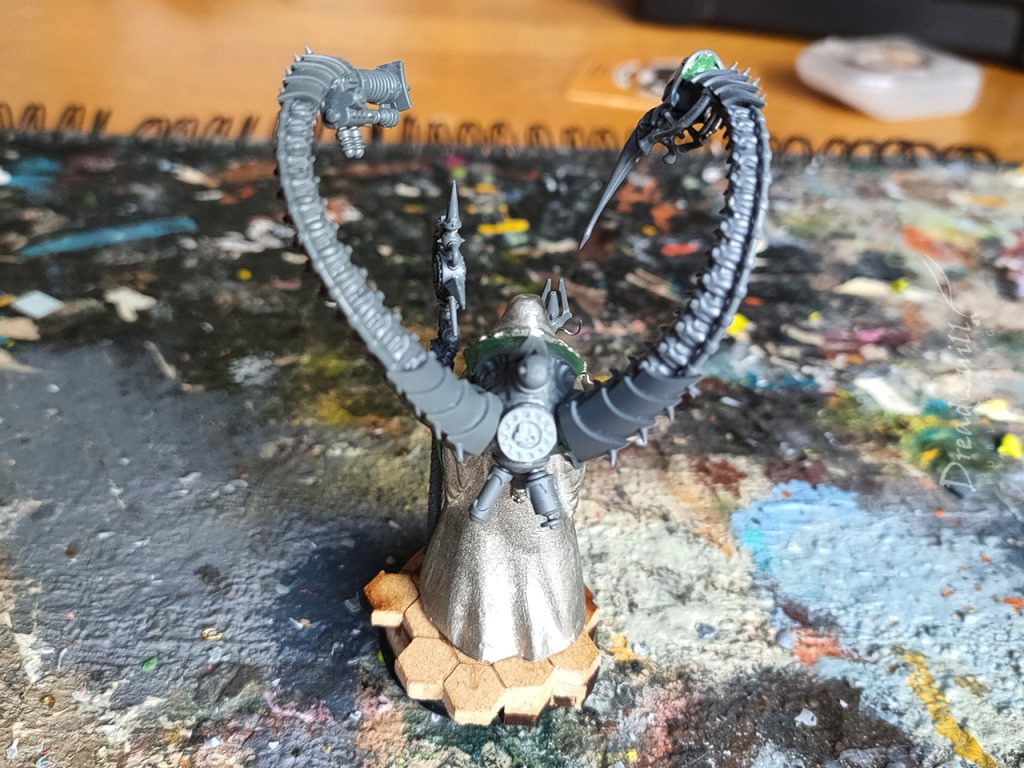
As with the rest of the gang, his power pack and mechadendrites came from Talos kits. It ties him in aesthetically to the other members of his retinue, and gives him a imposing presence on the tabletop. This fella doesn’t need to hide behind cover, and he knows it.
With the easy part done, it was on to the daunting task of colouring him in.
50 shades of Lahmian Medium
This was a daunting miniature to paint. There were lots of flat surfaces that would benefit from some freehand designs, and two separate parts of the mini that I wanted to try my hand at Object Source Lighting (OSL) on. I’ve done it in the past on smaller test figures, but never on something so large (or as important!).

Despite it being the last thing I did on the model, I want to talk about it first. The OSL was hard. After dropping a dozen or so hours into painting this figure, I was about to spend the same amount again repainting it in a different colour.
My first attempt was so poor I wanted to re-prime the whole model, I didn’t know how I was going to recover it. I watched a lot of youtube tutorials before bringing myself back to have another crack at it.

What I learned? Firstly, watch some damn tutorials. Second to that, patience. When people who do this often say it takes a million thinned layers, they’re not joking. Don’t faff about with water, get some proper blending medium too – Lahmian Medium is what I used, but shop around for your favourite.
Finally, and this was the bit I tripped up on, get your colours right. There are painting tutorials of people much smarter than me who can explain colour theory and lighting far better than I can, but I’ll do my best.
I originally tried to have a mid-range purple and thinly blend that over the existing colours, and highlight up by blending in white. That looked disastrous because I was missing other hues to give it proper depth.
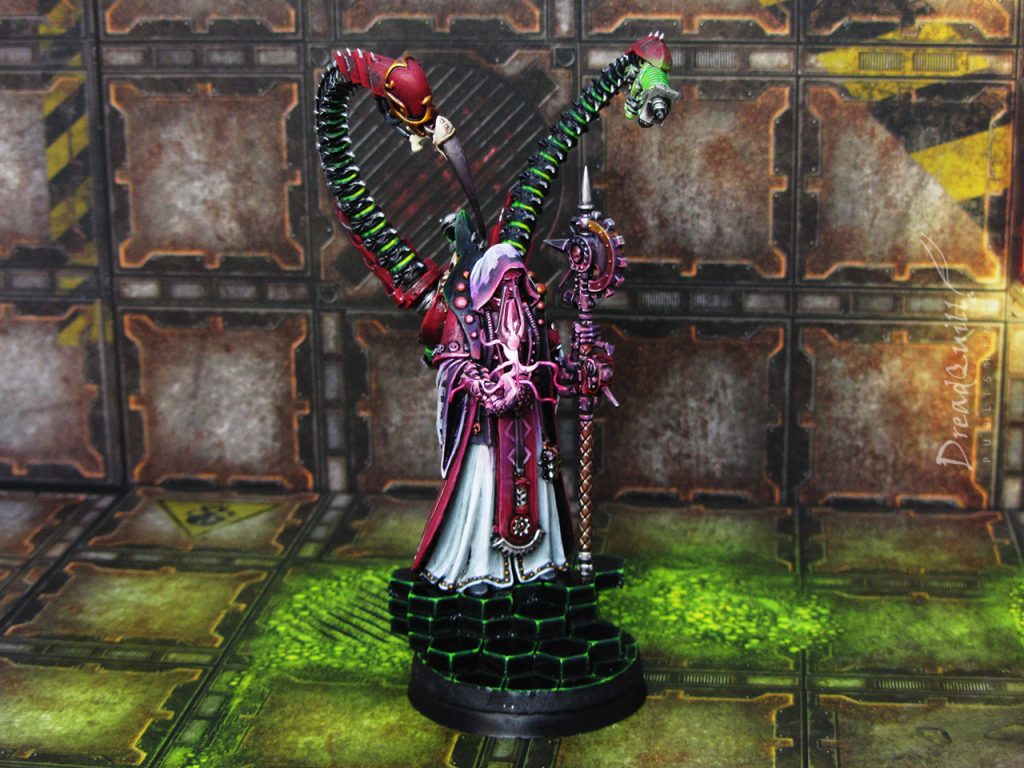
When I started using other purples and pinks, lining them up in rough order of shade, and blending those on top of each other, the results were striking. The recesses were a dark bluey-purple, the mid tones were a warm light red, and close to the origin was electric pink. Pure white was only ever used on the object itself.
And by gum, I think I pulled it off! I made a bunch of mistakes on it, and doing it again I would be more bold with my darker tones, but given how little I’d done before and the stakes involved in getting it wrong, I’m very happy with it.
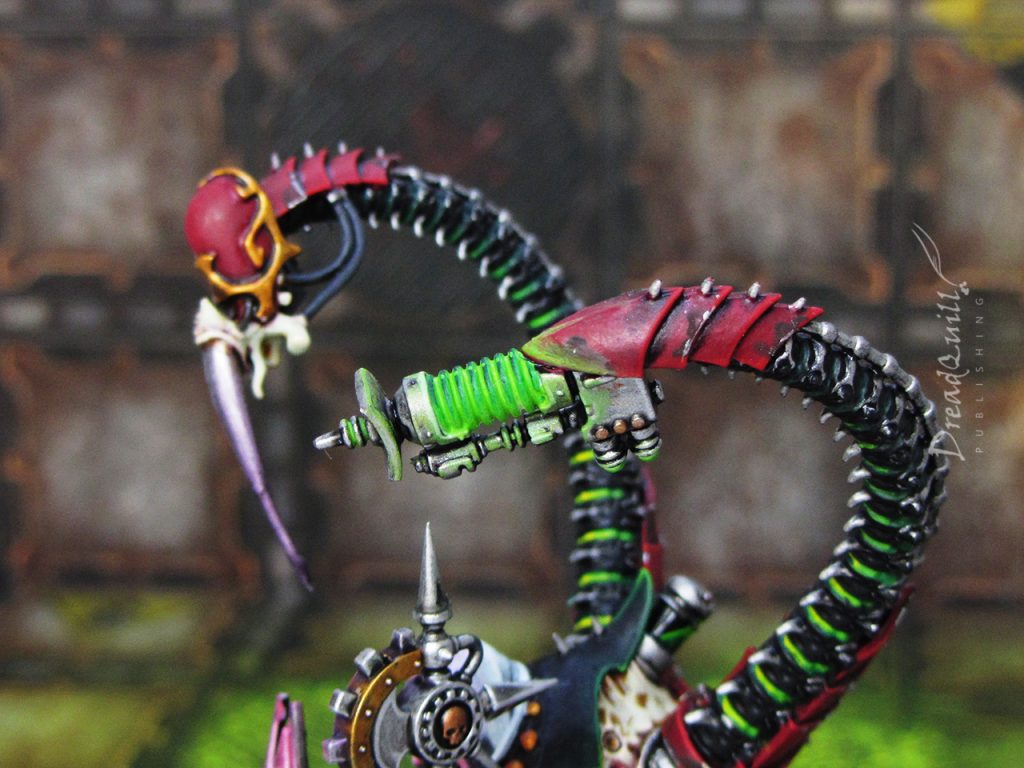
The first OSL on the model was actually these plasma coils, where I got my eye in for how to thin down colours. I borrowed from this tutorial on plasma glow, which gave me the confidence to try it at a much bigger scale.
Turns out it’s much easier to hide mistakes on a small scale!
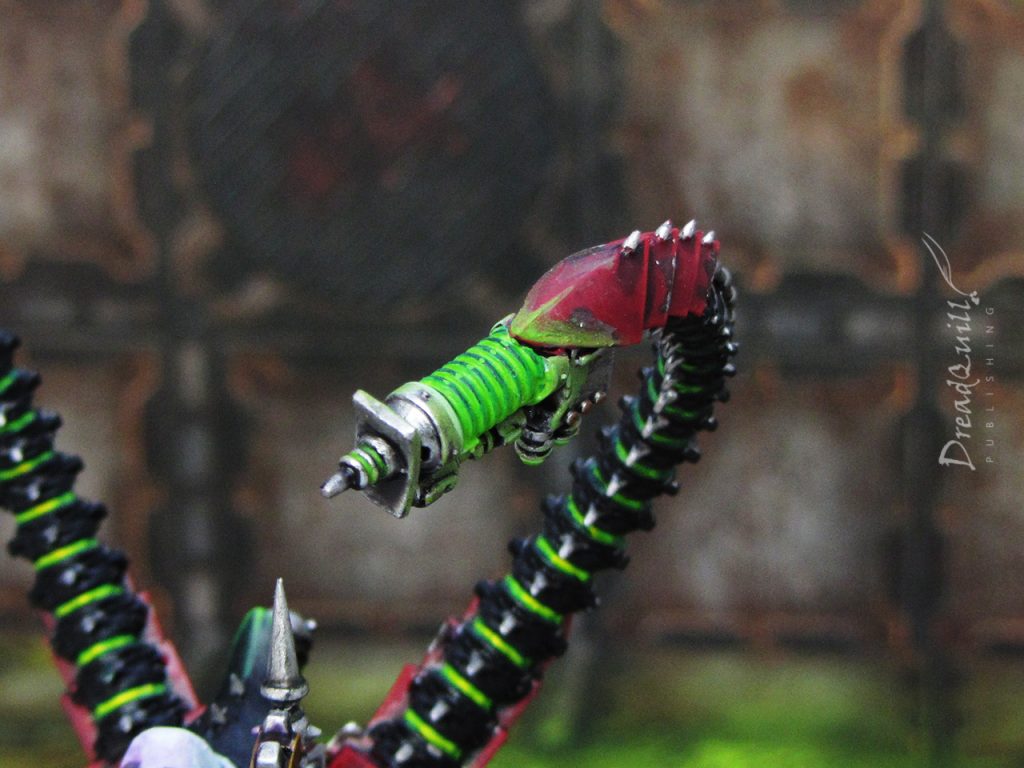
Once I got into it and understood what I was supposed to be doing, I massively enjoyed it. I’ve been eying up future minis to experiment on too, so that must be a positive!
The robes colours were also problematic. I had a colour palette from previous retinue members to copy, but annoyingly I used the same colour scheme for armour on the servitors as I did for the robes on the Magos, and Quinne was the only one of the four who had both robes and armour in any real quantity.
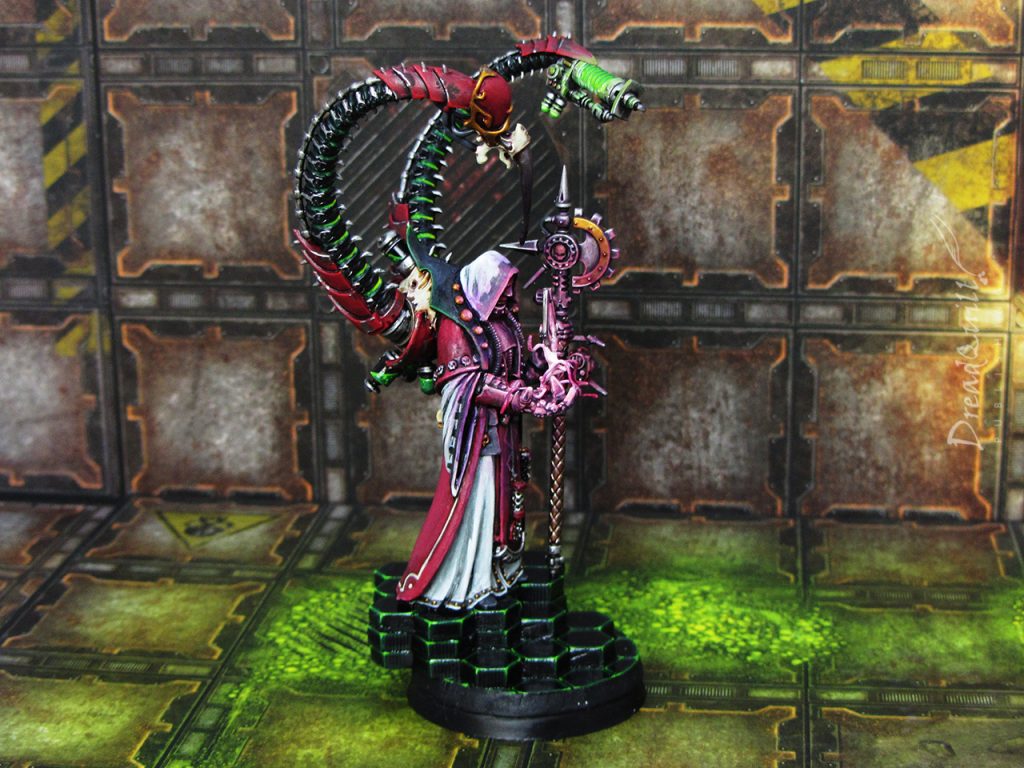
With all his layered clothing and armour, I made several attempts at a coherent scheme before I settled with the red/black/white combination. Cog teeth patterns were mandatory, of course.
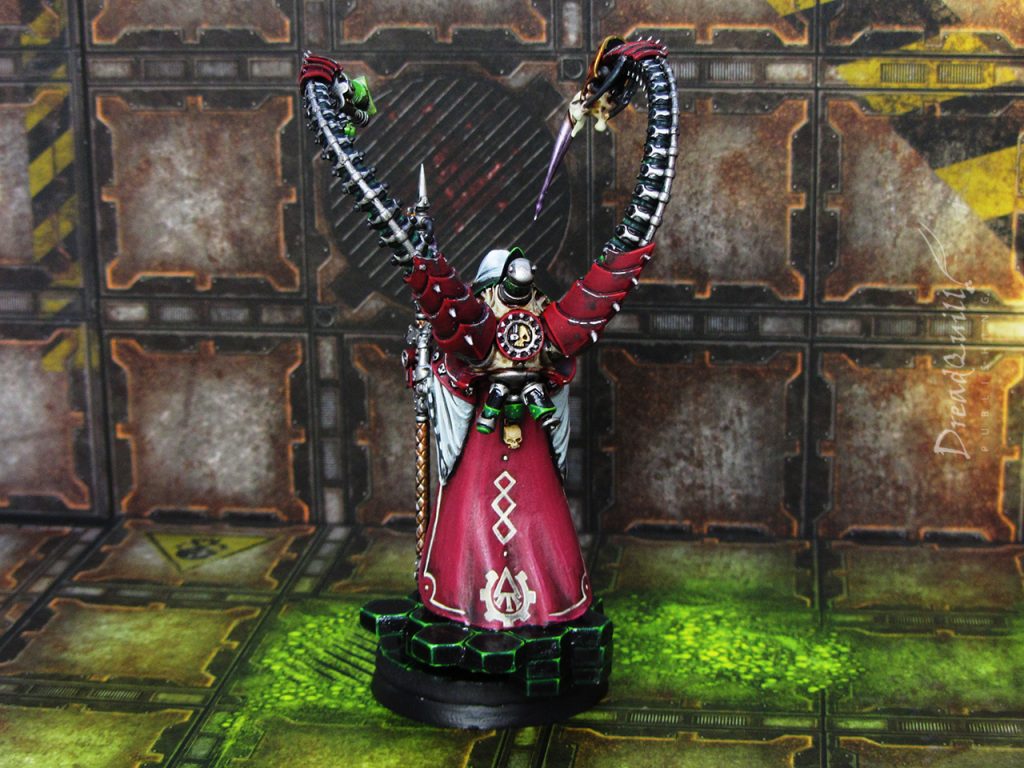
Deciding what to put on the cloak was fun, but required several re-works too. I definitely wanted the Genetors symbol on there – a stylised double helix representing his background in DNA meddling research. Given his new-found interest in Yu’Vath artifacts, I toyed with the idea of alchemical symbols too.
He’d essentially found a Philosopher’s Stone and could transmute substances previously thought impossible by science. Symbols having two meanings was a nice touch – Iron and Mars having the same symbol (♂) seemed like an obvious choice, and the symbol of Mercury, Spirit and Fusibility (☿) was a nice representation of his new hobby.
Unfortunately when I put them together, he looked like a gendered bathroom sign.
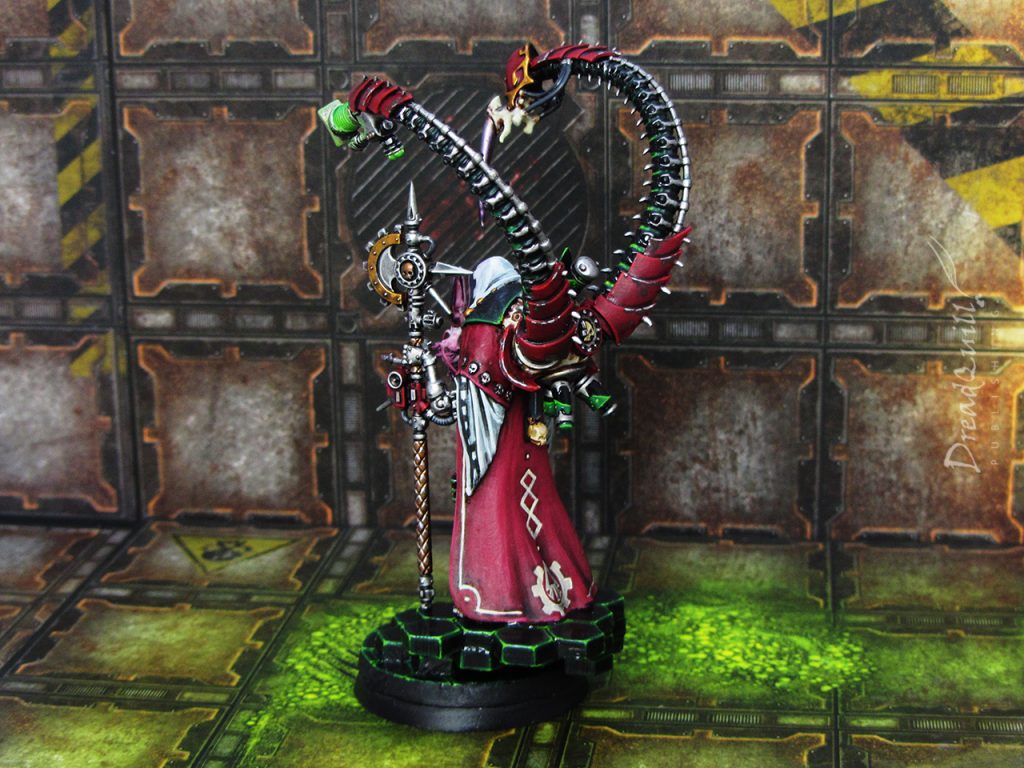
Back to the drawing board! I decided I just wanted one symbol in a cog, perhaps a new sub-faction of Mechanicus he had founded, and found the Philosophers Sulpher symbol (🜎) particularly intriguing. It represented the ultimate ‘spiritual goal’ of alchemy – the perfect marriage of spirit (mercury) and soul (sulfur). Something he’s attempting to do with his psychic awakening from the Yu’Vath artifact perhaps?
It was hocus-pocus enough to be interesting, and I could potentially use it as a plot hook for later down the line. For now though, it’s a cool symbol that toes the line of heresy. Perfect!
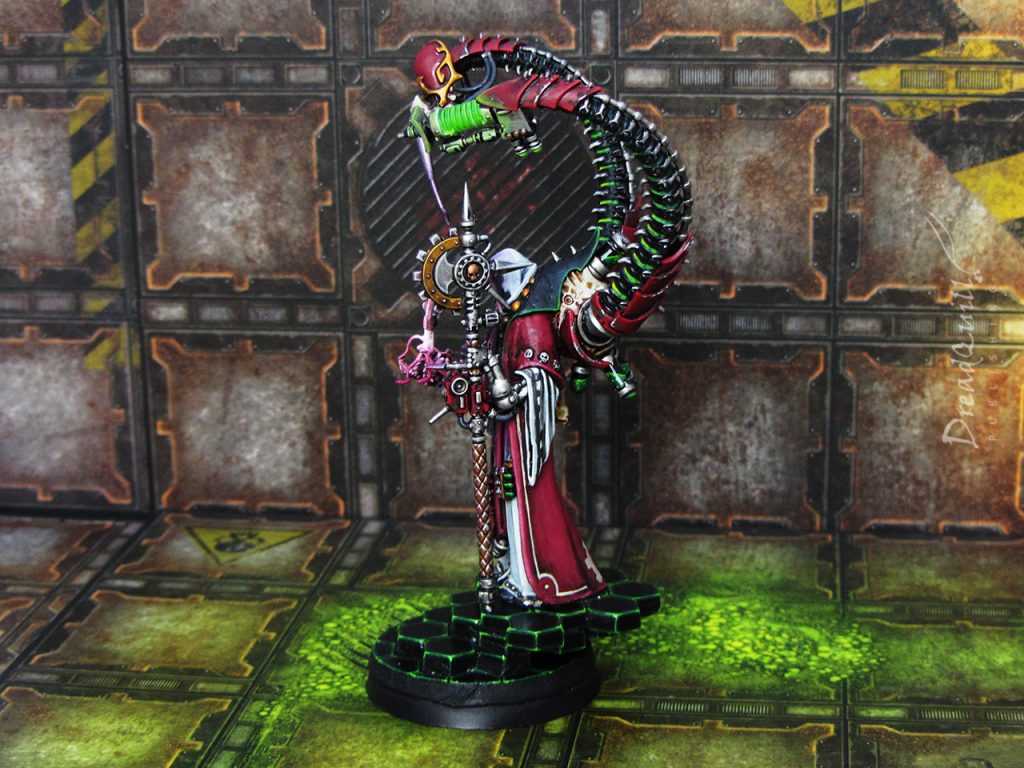
The base was painted as the others were – edge highlighted with dark to light greens, then given several thin layers of gloss varnish to give it that xenos feel to it.
And he was finished! The only thing remaining was to put him with the others and see how they looked as a warband.
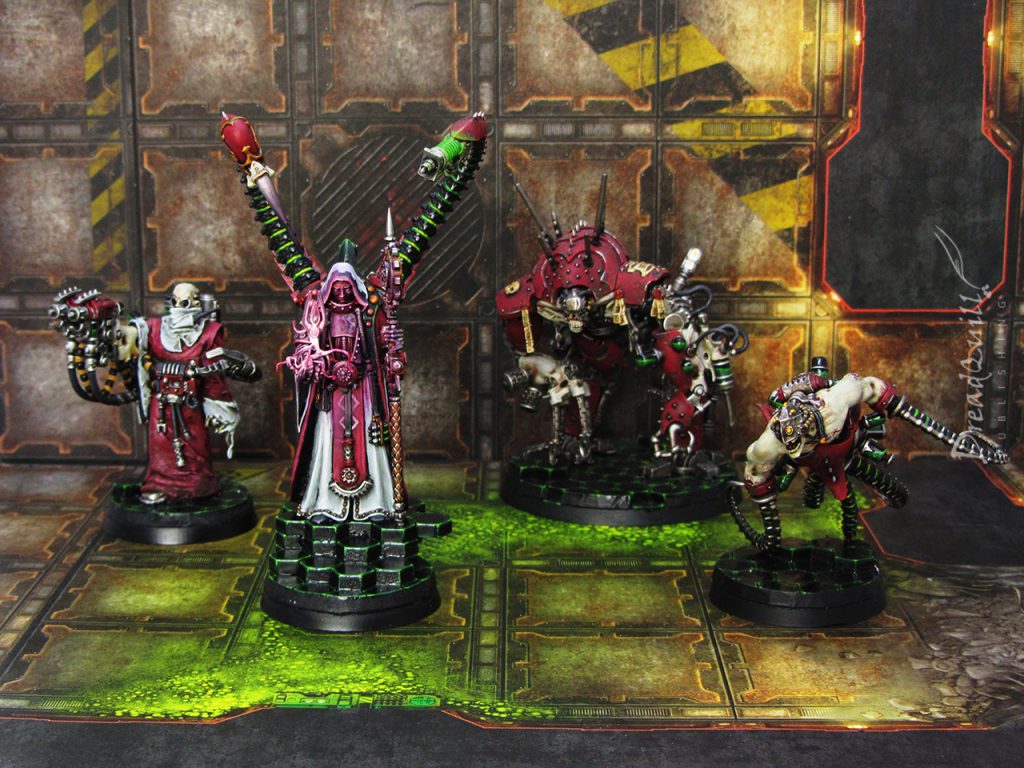
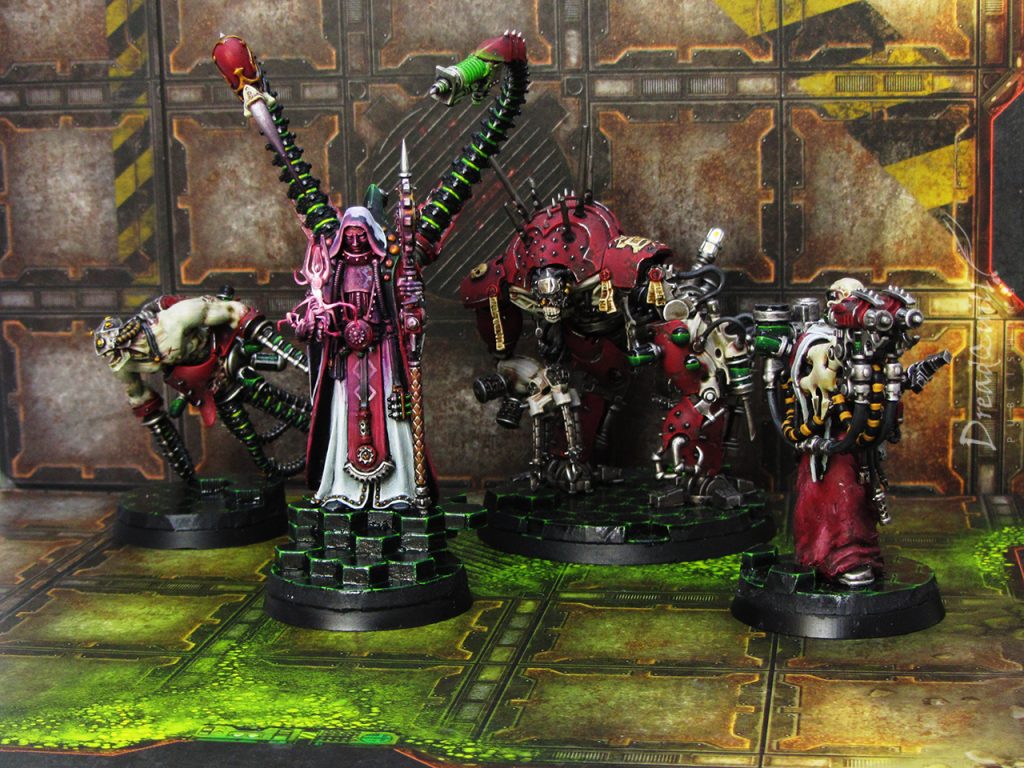
Pretty bloody excellent I think!
I’m very happy with how he came out. I must have sunk close to 30 hours into him overall, including research and repainting, but it was worth it. Inquisitor minis deserve that level of attention and patience, and I’d like to think the results speak for themselves.
Now I just need to come up with character sheets for them…

